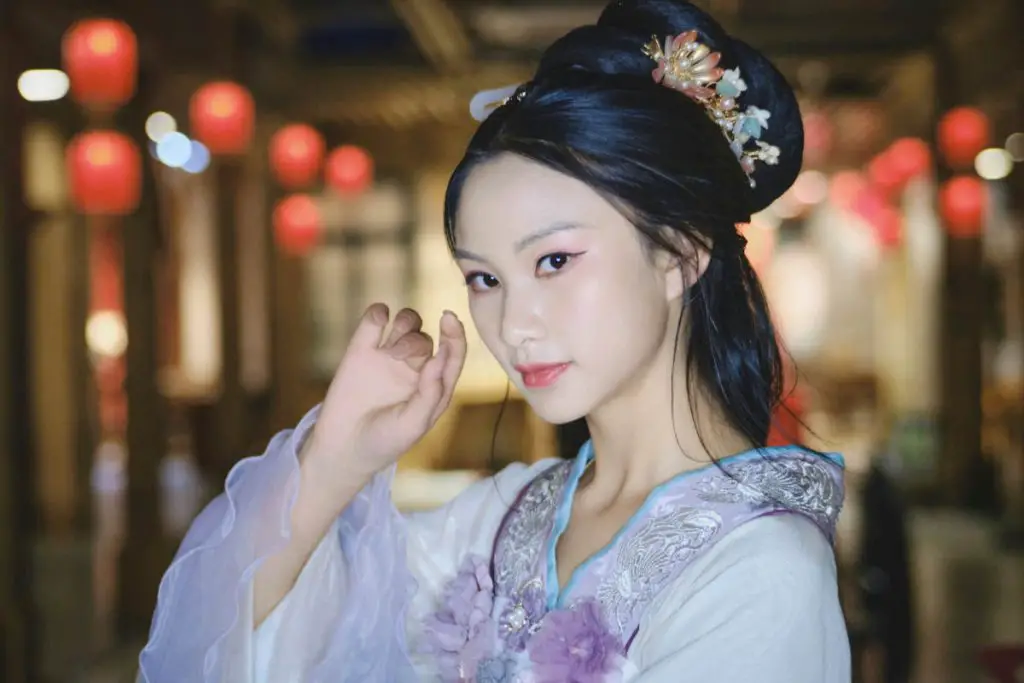In China, fair skin isn’t just a beauty preference—it’s a deep-rooted cultural ideal. From ancient poetry to modern billboards, pale skin has symbolized youth, elegance, and refinement. This fascination is not a passing trend; it’s a legacy that has endured for thousands of years.
In Chinese, there’s a popular saying: “一白遮百丑” (“yī bái zhē bǎi chǒu“)—“a single whiteness hides a hundred flaws.” The phrase captures how deeply fair skin is intertwined with beauty standards. It’s not just skin-deep. This belief connects to class, virtue, and even morality in traditional contexts. Historically, fair skin indicated wealth and leisure—those who stayed indoors and didn’t toil under the sun. This association of fairness with high social status still lingers today, albeit in new forms.
Walk down the streets of any major Chinese city, and you’ll see the impact. Women carrying parasols under the sun, shelves stacked with whitening creams, and influencers sharing their “brightening routines” online. The fair skin ideal quietly shapes behaviors, purchases, and even self-worth.
This obsession goes beyond aesthetics. It shapes identity, opportunity, and social dynamics. For some, being fair-skinned means better job prospects, more romantic attention, and higher social standing. In a society where appearance can influence outcomes, the pressure to fit the ideal is real.
Understanding where this obsession comes from—and why it persists—is essential to unpacking not just beauty norms, but how culture, history, and commerce intersect. By diving deeper, we can see the bigger picture: one that reflects broader questions of identity, gender roles, and evolving values in modern China.
Ancient Origins of China’s Fair Skin Ideal
In ancient China, fair skin was not just admired—it was expected of women considered beautiful. Royal consorts and court ladies were often praised for their “snow-like” complexion. Across dynasties, pale skin became a marker of elite status. Wealthy women stayed indoors, shielded from the sun, while working-class women, exposed to the elements, bore tanned skin as a result of physical labor.
This visual divide reinforced the idea that paleness equaled privilege. The less sun you saw, the more delicate and “refined” you were assumed to be. This concept trickled down from nobility to everyday life, shaping how even peasant girls viewed beauty. Fairness wasn’t just an ideal—it was aspirational, a visual cue of upward mobility.
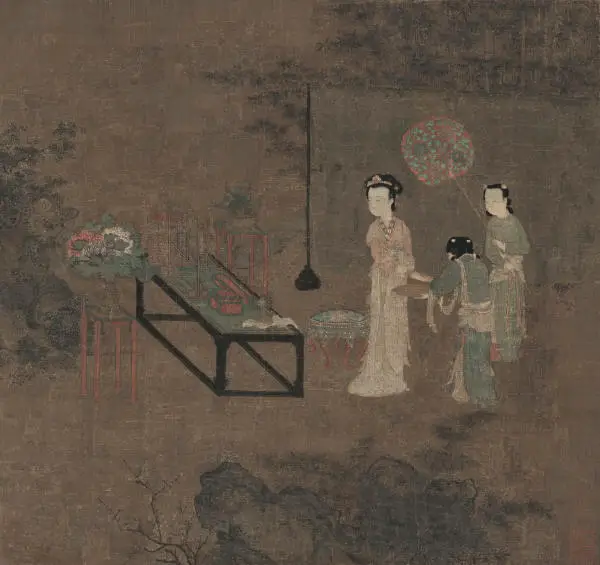
Confucian Values and the Morality of Skin
Confucianism, the backbone of Chinese philosophy for centuries, also played a role in reinforcing this ideal. While it didn’t explicitly discuss skin tone, Confucian values emphasized discipline, restraint, and purity—qualities that became associated with pale, unblemished skin.
Paleness symbolized inner virtue. A woman who kept herself modestly indoors, avoiding harsh labor and sun exposure, was seen as obedient and virtuous. Darker skin, by contrast, was unfairly linked to the roughness of manual work and an “unfeminine” lifestyle. Over time, fairness became a shorthand for moral superiority—a quiet, coded message about character.
Art, Poetry, and the Pale Muse
In traditional Chinese paintings and classical literature, the ideal woman is often painted with lily-white skin, delicate features, and ethereal grace. From the “Four Beauties of Ancient China” to Tang Dynasty poems describing women as “skin like snow and bones like jade,” lightness was the defining trait.
These portrayals didn’t just reflect societal ideals—they perpetuated them. They taught generations what was considered beautiful, gentle, and worthy of admiration. The brushstrokes of court artists and the verses of celebrated poets kept the fair-skin standard alive in the public imagination.
This ancient foundation laid the groundwork for today’s beauty expectations. The historical symbolism of fairness still echoes in modern media and marketing, giving today’s obsession with pale skin its cultural weight and emotional power.
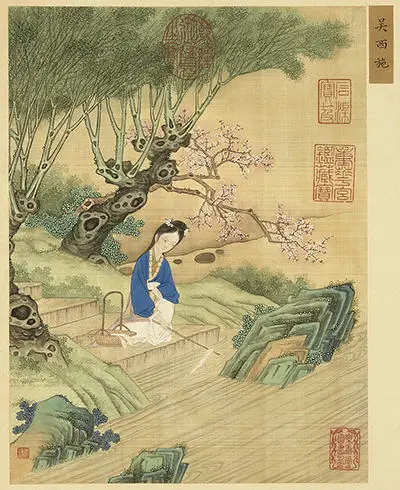
Cultural Beliefs and Pressures Behind China’s Fairness Obsession
In modern China, fair skin still whispers of wealth, success, and privilege. It’s more than just a beauty preference—it’s a visual signifier of class. The assumption is simple but powerful: those with lighter skin don’t need to work outdoors. They have the luxury to avoid sun exposure, often linked with rural labor and lower-income lifestyles.
This idea is reinforced in everything from job ads to dating profiles. Employers may prefer lighter-skinned candidates for front-facing roles. Online dating apps show a clear pattern—profiles featuring fair-skinned women tend to get more views and matches. The skin tone someone has, or is perceived to have, subtly shapes how they are treated in daily life.
Fairness and Femininity: A Deep-Rooted Connection
For Chinese women, fairness is not just associated with status—it’s intertwined with the idea of femininity itself. Fair skin is often linked to delicacy, softness, and purity. These traits are traditionally valued in women, and they align with historical expectations for female behavior: gentle, passive, and refined.
From a young age, girls may hear comments like, “You’d be so pretty if your skin were lighter.” Such remarks aren’t meant as cruelty—but they plant seeds. They suggest that fairness is a requirement for beauty and femininity. This conditioning is quiet but persistent, influencing how women see themselves and how they believe others see them.
Colorism Across Borders: A Widespread Issue in Asia
This isn’t just a Chinese issue. Colorism—discrimination or bias based on skin tone—exists throughout Asia. In countries like South Korea, Thailand, India, and the Philippines, fair skin is also marketed as desirable. Beauty brands promote “whitening” products, and celebrities with paler complexions are often held up as the standard.
Even within Asian communities abroad, lighter skin often receives more praise. The internalized preference for fairness can be traced back to shared histories of colonialism, class systems, and cultural storytelling. But in China, the pressure feels especially potent, thanks to a combination of ancient traditions and modern media.
The obsession with fair skin isn’t about beauty alone. It’s wrapped in layers of identity, social standing, and inherited belief systems. To understand the appeal, we have to see it not just as an aesthetic choice—but as a cultural expectation that continues to evolve with time.
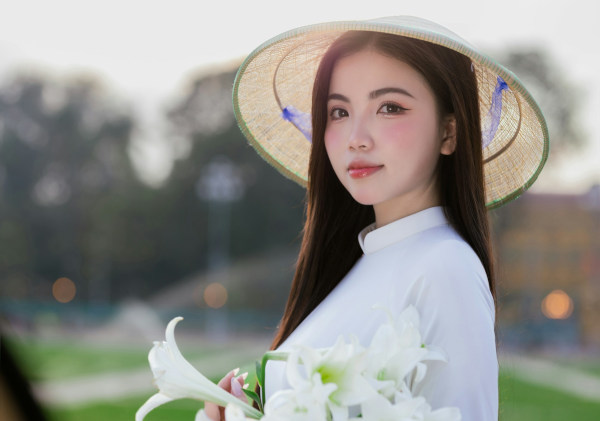
Modern Influences Fueling the Obsession with Fair Skin in China
Today’s media landscape plays a powerful role in reinforcing the fair-skin ideal. Turn on a popular Chinese drama, flip through a fashion magazine, or scroll through Xiaohongshu (China’s Instagram-meets-Pinterest platform), and you’ll see the same pattern: light-skinned women portrayed as desirable, elegant, and successful.
Television and film often cast pale actresses as leads—heroes, lovers, or career women—while darker-skinned characters, if shown at all, are sidelined or stereotyped. These visual cues may seem subtle, but over time they shape public perception of what “beautiful” looks like. Advertising doesn’t help. From skincare brands to clothing lines, the message is clear: whiter is better.
The Booming Skin-Whitening Industry
The Chinese beauty industry is thriving, and fairness is its top-selling promise. Whitening products—creams, serums, masks, sunscreens—dominate the skincare market. Brands use terms like “brightening,” “radiance,” and “spot-fading” to promote a lighter complexion, even when the underlying effect is just skin lightening.
From luxury labels to affordable drugstore items, these products are marketed with scientific-sounding benefits and celebrity endorsements. Many women begin using them as early as their teenage years. In some cases, the pursuit of fairer skin becomes part of a daily routine—a regimen of layered products aimed at achieving that coveted glow.
Social media influencers and beauty vloggers contribute to this cycle, often sharing multi-step routines and product reviews that subtly push the narrative: pale is polished, pale is pretty.
K-Beauty and the Global Beauty Conversation
The rise of K-beauty (Korean beauty) has also impacted Chinese beauty ideals. Korean pop stars and actresses—famous for their flawless, porcelain skin—are hugely popular in China. Their influence extends beyond entertainment into fashion, skincare, and makeup trends.
This cross-cultural admiration strengthens the fair-skin preference. Korean beauty standards, which favor clear, dewy, and pale skin, align closely with Chinese ideals. Many Chinese women look to Korean skincare as the gold standard, and in doing so, absorb the same visual cues about fairness.
At the same time, Western beauty culture plays a role too. While diversity is gaining more attention globally, Western luxury brands still tend to feature fair-skinned models in their campaigns in Asia. This further cements the association between fairness, modernity, and sophistication.
Modern technology also adds fuel to the fire. Beauty filters on apps like Meitu automatically lighten skin in selfies. Facial-enhancing features are often pre-set to slim noses, enlarge eyes, and brighten complexions—reshaping reality to match the ideal.
In this media-saturated world, the message is everywhere: fair skin is not only desirable, it’s expected. It’s a standard upheld by industry, technology, and culture all at once.
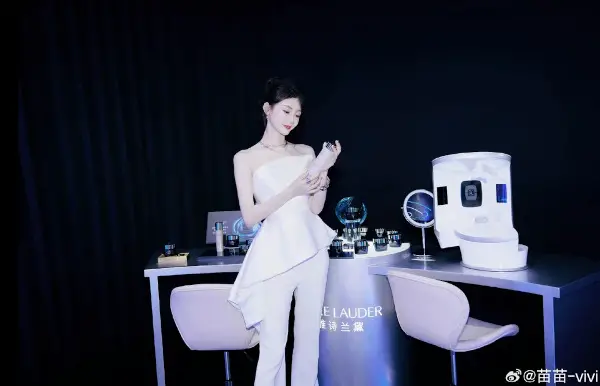
Everyday Rituals: Umbrellas, Facekinis, and Sun Avoidance in the Pursuit of Fair Skin
In many parts of China, sun protection isn’t just a health habit—it’s a beauty ritual. Women don’t just use sunscreen; they arm themselves with umbrellas, wide-brimmed hats, UV-protective clothing, and even driving gloves. Walking outside on a sunny day, especially in cities like Shanghai or Guangzhou, you’ll often see women shielding themselves with parasols, not for rain, but to block the sun.
This sun-avoidance routine is deeply ingrained. Even a short walk to lunch can prompt someone to reach for an umbrella. It’s a small, daily act that reveals a bigger, cultural truth: avoiding tanning is as important as applying makeup or brushing teeth.
The Facekini Phenomenon
One of the most unique—and visually striking—symbols of this trend is the facekini. Originally developed in Qingdao for swimmers to protect against jellyfish stings and sunburn, the facekini quickly became popular among older women looking to preserve their fair skin. It covers the entire face, leaving only the eyes, nostrils, and mouth exposed.
Though often seen as quirky or even humorous by outsiders, the facekini reflects the extreme lengths to which some people will go to prevent tanning. It’s not just about beauty—it’s a form of commitment to a cultural ideal, one that prioritizes long-term fairness over fleeting comfort.
UV Fashion and Innovation
Chinese brands have responded to this obsession with innovation. UV-protective clothing is now common, featuring breathable, high-SPF fabrics. Sleeves designed to be worn while driving, special masks to protect the lower half of the face, and anti-UV umbrellas are hot-selling items online.
These items are often promoted with both health and beauty language—“protect your skin from aging and dark spots”—blurring the lines between medical concern and aesthetic anxiety. It’s a booming market, fueled by real fears about sun damage and cultural messages that glorify paleness.

Social Norms Reinforce the Practice
The pressure to avoid the sun isn’t just personal—it’s social. Friends may comment if someone’s skin looks tanned after a trip. Mothers and grandmothers often encourage daughters to stay out of the sun, reminding them to “protect their whiteness.” Compliments like “you’re so pale today!” are common and meant sincerely.
This type of praise normalizes the effort. It reinforces the idea that these rituals—no matter how time-consuming or uncomfortable—are worthwhile. After all, they’re seen not just as beauty maintenance, but as part of a broader social expectation for women to maintain a soft, “ladylike” appearance.
The Psychology Behind the Desire for Fairness
In China’s color-conscious society, fair skin is more than a physical trait—it shapes how women see themselves and how they believe others perceive them. The preference for pale skin is deeply internalized, influencing self-esteem and identity. Many women associate fairness with beauty, success, and social acceptance, which can lead to a strong psychological attachment to maintaining a light complexion. This ideal is reinforced daily through media, advertising, and social interactions, making skin color a key component of personal identity and social belonging.
The rise of social media has intensified peer pressure around skin tone. Platforms like Douyin and WeChat are flooded with images and videos showcasing flawless, fair-skinned influencers, creating a digital environment where comparison is constant. Many young women feel compelled to conform to these beauty standards to gain approval and avoid social exclusion.
This digital comparison culture can exacerbate anxiety and dissatisfaction with one’s natural skin tone, sometimes leading to excessive use of whitening products or cosmetic procedures. The pressure is so pervasive that some women experience “selfie dysmorphia,” a psychological condition linked to distorted self-image caused by constant exposure to filtered and edited images.
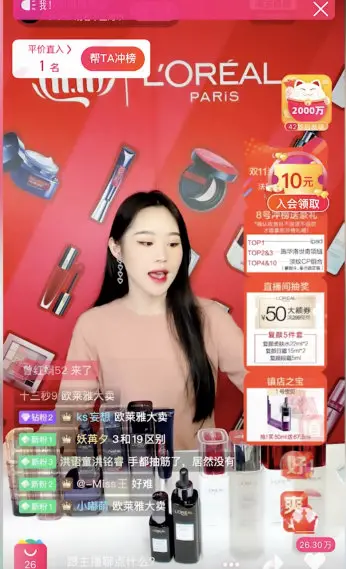
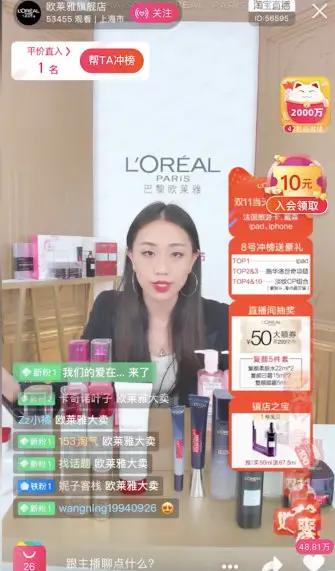
How Fairness Is Linked with Opportunity, Love, and Success
Fair skin is often perceived as a gateway to better opportunities in life. Studies and social observations reveal that lighter-skinned individuals in China tend to enjoy advantages in the marriage market, employment prospects, and social mobility. The ability to present oneself with a fair complexion is seen as a form of social capital, signaling discipline, refinement, and higher status.
Purchasing skin-whitening products can even be viewed as a demonstration of wealth and independence, reinforcing the idea that fairness is connected to empowerment. However, this link also creates a paradox where women feel both empowered and constrained by societal expectations, as their worth becomes tied to an often unattainable beauty ideal.
Health Risks and Ethical Concerns in the Pursuit of Fair Skin
Behind the glossy advertisements and glowing promises, the skin-whitening industry hides some unsettling truths. Many products, especially those sold by lesser-known brands or purchased through unofficial channels, may contain harmful ingredients like mercury, hydroquinone, and steroids. These chemicals can cause severe skin damage, rashes, infections, and long-term health problems such as kidney damage or hormonal imbalance.
While regulations exist in China, enforcement remains inconsistent. Some banned ingredients still find their way into the market through online platforms or counterfeit goods. For consumers eager to see fast results, the appeal of “stronger” creams often outweighs the risks—until the damage becomes visible.
Overuse of Sunscreen and Skin Sensitivity
Even safe sun protection practices can go too far. Excessive sunscreen use, constant reapplication, and layering with other chemical-laden skincare products can cause skin sensitivity or allergic reactions. For women who avoid sun exposure entirely—by staying indoors or using full-body coverage—there’s also the risk of vitamin D deficiency, which affects bone health and immunity.
These health consequences are rarely discussed in beauty campaigns. Instead, the conversation centers on appearance, often ignoring the body’s actual needs.

Mental Health and Self-Esteem Issues
The constant pressure to be fairer can take a toll on mental health. For women who don’t match the ideal—whether due to genetics, lifestyle, or personal preference—the gap between reality and cultural expectation creates a quiet but persistent feeling of inadequacy.
Some develop low self-esteem or body image issues. Others become dependent on filters and photo editing tools to feel comfortable sharing their faces online. The emotional burden of never feeling “white enough” can lead to anxiety, obsession with appearance, and even depression.
In severe cases, individuals may resort to extreme treatments like skin bleaching, which often causes more harm than good. The desire to change one’s natural skin color reflects a deeper problem—one where external validation outweighs personal well-being.
Ethical Marketing and the Beauty Industry’s Responsibility
There’s also a growing ethical conversation about how fairness is marketed. Beauty brands, influencers, and media outlets often avoid directly saying “whiter is better,” but the implication is everywhere. Models with fair complexions dominate campaigns, while terms like “brightening,” “tone correction,” or “skin radiance” are used to dance around the true message.
This coded language can mislead consumers, especially younger girls who are just forming their ideas of beauty. It also perpetuates a system where natural diversity in skin tone is overlooked, if not outright devalued.
A number of global brands have come under scrutiny for their whitening campaigns in recent years. Some have begun to pull products or rebrand their messaging in response to criticism. But in China, where demand remains strong and cultural beliefs still reinforce the ideal, the shift is slow.
Ultimately, the pursuit of fairness comes at a cost—one that affects not just the skin, but the body, mind, and society at large.
Shifting Trends and Emerging Counter-Movements in China’s Beauty Landscape
While the fair skin ideal remains strong in China, a noticeable shift is emerging among younger generations who are beginning to embrace their natural skin tones. This change reflects a broader movement toward authenticity and self-acceptance.
Instead of striving for extreme fairness, many young Chinese women now prioritize healthy, glowing skin—often described as the “glass skin” look, which emphasizes clarity and radiance over mere lightness. This trend aligns with growing interest in sustainable, clean beauty and holistic wellness, signaling a desire to move beyond rigid fairness standards toward more natural and individualized beauty.

Influencers Promoting Diversity in Beauty
Social media influencers are playing a crucial role in challenging traditional beauty norms by promoting diversity and inclusivity. On platforms like Xiaohongshu and Douyin, influencers showcase a range of skin tones and encourage followers to celebrate their unique features.
Some openly reject the pressure to whiten their skin, advocating instead for confidence in one’s natural complexion. This rising visibility of diverse beauty ideals helps to normalize different skin tones and fosters a more inclusive beauty culture. Additionally, niche communities, such as those supporting tanning and sun-kissed looks, are gaining traction, especially in first-tier cities, further broadening the spectrum of accepted beauty.
The Slow but Growing Pushback Against Fairness Fixation
Despite the continued dominance of skin whitening products and the market’s growth, there is a slow but steady pushback against the obsession with fairness. Consumers are becoming more discerning, seeking products that enhance skin health and glow rather than simply lighten. The beauty industry is responding with innovations focused on brightening, anti-aging, and skin barrier repair rather than just whitening.
Moreover, body positivity movements and calls for inclusivity are gaining ground, challenging the long-standing fixation on pale skin as the sole standard of beauty. This evolving landscape suggests that while fairness remains influential, it is increasingly balanced by a desire for diversity and natural beauty.
Final Thoughts
The obsession with fair skin among Chinese women is much more than a simple beauty preference—it is deeply woven into the fabric of history, culture, and social dynamics. From ancient ideals rooted in class and Confucian values to modern influences powered by media, technology, and consumerism, the pursuit of fairness reflects a complex interplay of identity, status, and self-worth.
Yet, beneath the surface of this ideal lies a range of consequences: health risks from unsafe products, mental health struggles, and ethical concerns about how beauty is marketed and perceived. Thankfully, shifting attitudes driven by a younger, more open-minded generation, along with diverse influencers and grassroots movements, are beginning to challenge these rigid standards.
As China’s beauty culture slowly embraces natural skin tones and individuality, the hope is that fairness will evolve from a narrow obsession into one aspect of a broader, more inclusive understanding of beauty. In doing so, it encourages women to value themselves beyond complexion—celebrating the richness of diversity in skin, identity, and spirit.
Related reading: Exploring The Importance Of Family In Chinese Culture – Opens in new tab
Stay in Touch
 Join our newsletter by using the forms on this website or click here!
Join our newsletter by using the forms on this website or click here! Follow us on Google News
Follow us on Google News Follow us on Facebook
Follow us on Facebook
Featured image by Frank Ching on Unsplash

